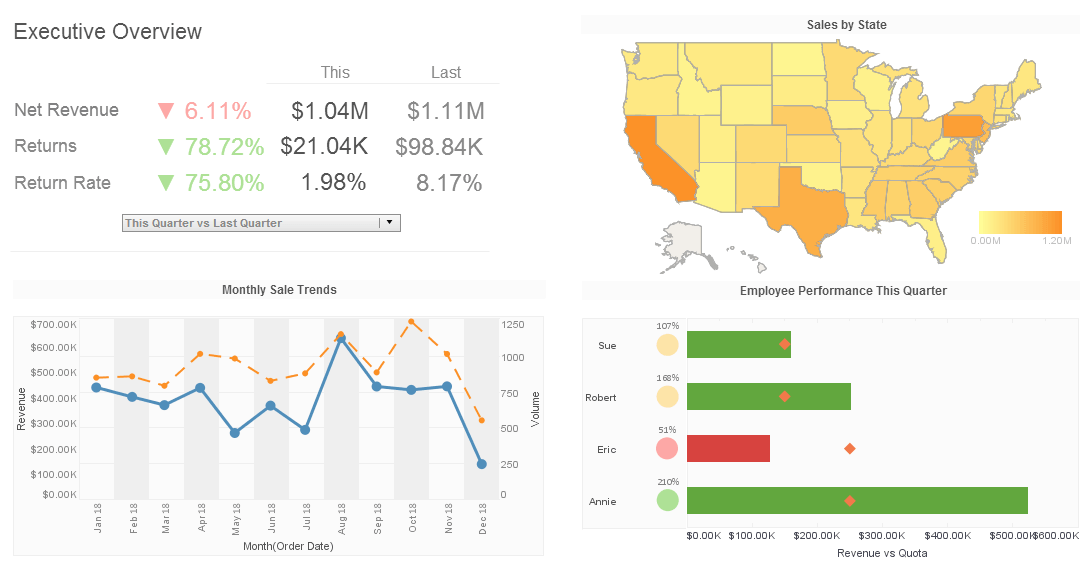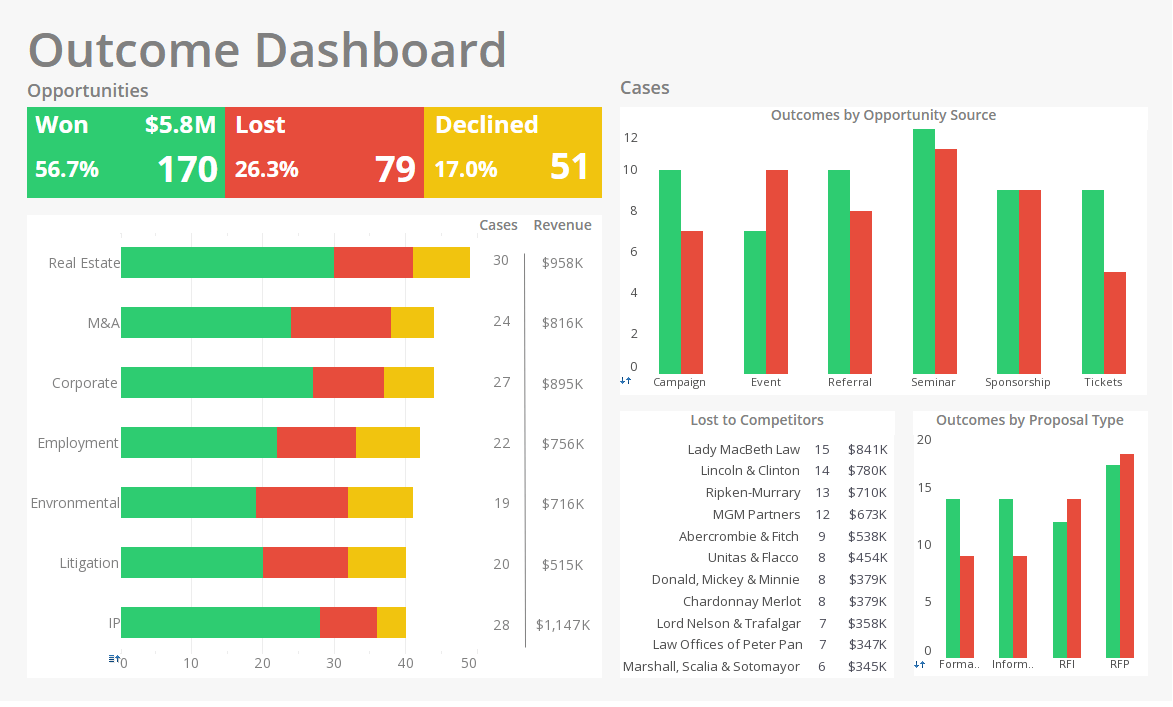InetSoft's Information Reporting Tool
StyleBI differentiates itself through its hybrid data architecture, combining in-memory processing with direct query access to handle large, complex datasets efficiently while providing responsive dashboards. Unlike many BI tools that require full data ingestion into their proprietary engines, StyleBI can blend live and cached data sources, optimizing performance without forcing unnecessary duplication. This makes it well-suited for organizations with diverse data environments, including on-premise and cloud databases, allowing teams to build dashboards on real-time data while leveraging in-memory acceleration for heavily queried datasets.
Another key differentiator is StyleBI’s high level of customization and advanced visualization capabilities without sacrificing ease of use. Users can design dashboards with advanced chart types, pixel-level layout control, and flexible drill-down paths, enabling precise storytelling and operational monitoring. At the same time, business users can utilize drag-and-drop design and self-service data preparation without heavy IT dependency, while technical users retain advanced SQL, scripting, and parameterization capabilities. This balance allows teams to standardize dashboards for enterprise use while enabling agile exploration for ad-hoc analysis.
Finally, StyleBI offers lightweight deployment options, including Dockerized container support, and robust embedded analytics capabilities, making it a practical choice for ISVs and SaaS providers looking to integrate reporting and dashboards within their applications. It can be deployed on a single server or scaled across distributed environments with minimal footprint, reducing infrastructure complexity. Its security model supports fine-grained, row-level data permissions, ensuring data governance while allowing personalized, embedded dashboards for end users. These capabilities position StyleBI as a flexible, scalable alternative for organizations seeking to unify reporting and analytics while maintaining strong control over user experience and system resources.


Top Embedded Reporting Features of StyleBI
One embedded reporting feature of StyleBI is its pixel-perfect report designer, which allows precise control over layouts, fonts, images, and page breaks for customer-facing or regulatory reports. This capability enables ISVs and SaaS providers to embed professionally formatted reports directly within their applications, maintaining branding consistency while delivering clear, structured outputs for invoices, statements, or compliance documents. Developers can generate these reports dynamically based on user actions, schedule them for automated delivery, or allow users to export them in formats like PDF, Excel, or HTML, all while preserving the exact layout.
A second embedded reporting feature is interactive, drillable dashboards that can be securely embedded within web portals or SaaS products. StyleBI allows developers to provide embedded dashboards with full interactivity—such as filtering, sorting, drill-down, and drill-through navigation—while respecting user permissions defined in the parent application. This enables end users to explore operational data and key metrics within the app context without switching platforms, improving engagement and user experience. The embeddable components are responsive, supporting display on desktop and mobile devices, ensuring consistent reporting accessibility across user environments.
Third, StyleBI offers embedded ad-hoc report building for end users within applications, enabling self-service analytics while retaining control over data security and performance. ISVs can expose a controlled ad-hoc designer that lets users create custom reports or modify existing templates, using only the data and visualizations allowed by the security model. This reduces reporting backlog on development teams while providing customers with flexibility to analyze their own operational metrics and slice data in the way that best fits their workflows, making embedded reporting a competitive feature for SaaS products aiming to add high-value, interactive data services.

